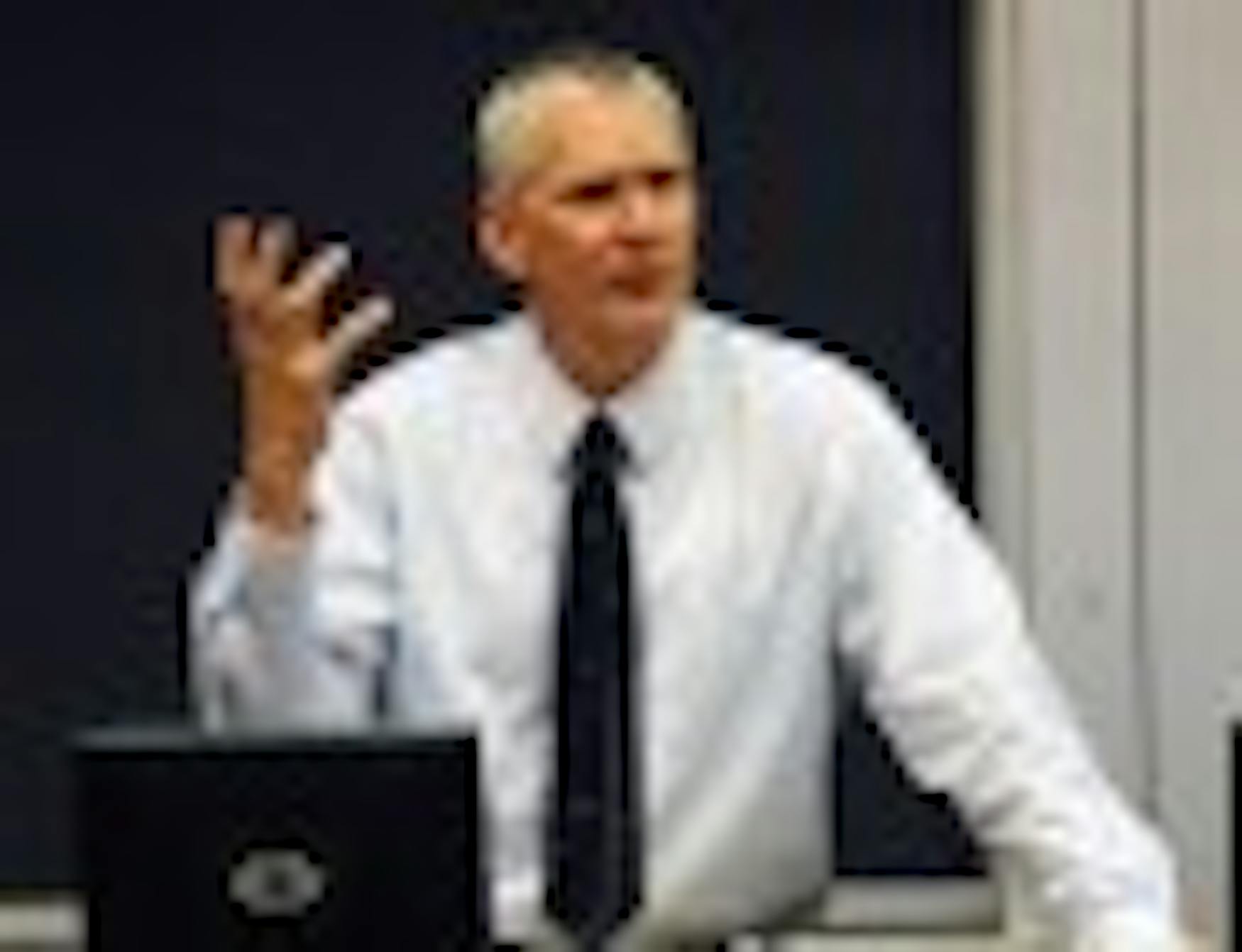Wabash representatives visit campus
At last Thursday's faculty meeting, Charles Blaich, a representative from the Wabash College Center of Inquiry, which performed a study designed to assess the effects of liberal arts education, made a presentation explaining the results of Wabash survey-which were partially released on Oct. 5-to the faculty. Representatives from the survey also spoke to Brandeis students in focus groups in order to get a more in-depth look at the findings. According to its website, the Wabash National Study is a longitudinal study that looks into the way in which seven critical factors-critical thinking, integration of learning, leadership, moral reasoning, interest in and attitudes about diversity, need for cognition and integration of learning and well-being-affect a liberal arts education. The Class of 2012 was surveyed in fall 2008 and spring 2009 and will be surveyed again in spring 2012, when the students will be seniors.
In an interview with the Justice, Provost Marty Krauss said that the University decided to do the survey-which was funded by Wabash-in the first place because it was a chance to be part of a national longitudinal study that would possibly provide the administrators with some insight as to how the students at Brandeis learn. "We are a learning institution, so we want to learn how well we're doing, and we want to learn how we can positively affect students' intellectual growth while they're here."
In an interview with the Justice, Krauss said that the results involving diversity experiences were "gratifying," while they were going to have to "reflect" on the results relating to faculty-student interactions. According to the results, 72 percent of Brandeis students who participated in the survey have "had serious conversations with students who are very different from them in terms of their religious beliefs, political opinions or personal values."
Krauss said that the fact that students feel good about their diversity experiences on campus was "really heartening . because we do communicate the need for civility and openness and explorations on these issues, which can be tough issues."
At the faculty meeting, Blaich also commented on the fact that the results relating to diversity experiences were "remarkably high" at Brandeis in comparison to other schools that participated in the survey. He said that other small schools-small schools being the comparison group of which Brandeis was a part-that participated in the study did not prove that there is a "small-school advantage" concerning diversity interactions.
Blaich also explained the statistic relating to student-faculty interactions at the meeting on Thursday. According to the charts that Blaich presented at the meeting, 61 percent of students "have never worked with faculty members on activities other than coursework."
Prof. John Plotz (ENG) said to Blaich during the meeting that this statistic is concerning because "according to the chart, to first-years, we seem like [what] a large university would be like."
In her interview, Krauss explained this statistic more thoroughly. She pointed out that these results came from first-years, who often are "nervous or intimidated about speaking in front of the faculty." She said that she "can imagine it might be difficult for an 18-year-old kid who's coming to college for the first time to feel confident in approaching a faculty member."
In addition to the quantitative data, Krauss said that part of the project is for the team from Wabash to come to participating schools and talk with the students to try to get a more in-depth look at the school than the pure statistical analysis that the survey came up with. At the faculty meeting, Blaich said that there were three big focus groups that he worked with on Wednesday, Oct. 6.
Students were invited to attend these focus groups in an e-mail from the provost on Oct. 5. The focus groups took place on Oct. 6 and, according to what Blaich said at the faculty meeting, they were comprised of students ranging from first-years to seniors.
Krauss would not provide the names of students who participated, citing confidentiality reasons.
Blaich said that in the focus groups, one of the interesting things he found is that the data he got from the first-years and the data he got from the seniors was very different in terms of the faculty interactions. He also said that there is "an amazing amount of students who respect . and admire their professors a lot."
Krauss said that she was going to be meeting with the Wabash team again on Friday to discuss this particular result further. In terms of changing things to make it easier for first-years to interact with faculty, she said, "We're not going to try to set up artificial requirements for faculty and students."
Krauss wrote that the meeting consisted of "a wide ranging discussion . about a variety of topics. No specific decisions or plans emerged-I think we need more reflection time-but there is an interest to develop possible approaches. We clearly need to have more extensive talks with faculty on this issue."
Krauss said that something else to keep in mind when looking at the results is that 62 percent of the Class of 2012 took the surveys in fall 2008, and only 18 percent of the Class of 2012 took it again in spring 2009.
While the results would be more accurate if the same number of people took the survey both times-and extremely accurate if the entire first-year class had been required to take part in the survey-the provost said, "[This] is no reason to completely discount the findings because they are what they are.



Please note All comments are eligible for publication in The Justice.